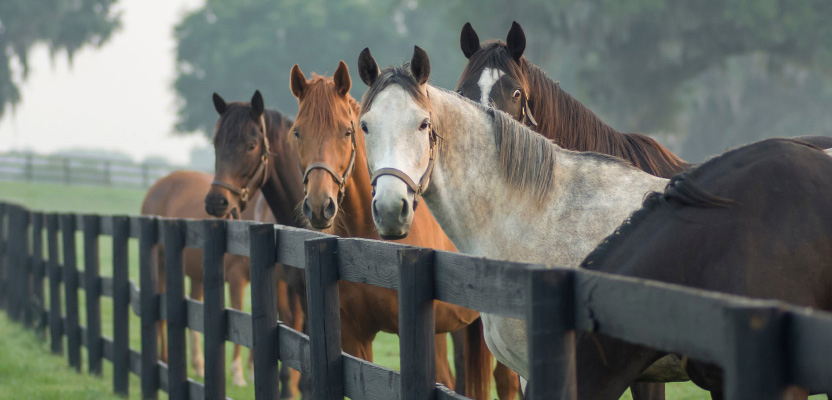

Bringing a new horse into an existing herd can be an exciting yet challenging experience. Horses are social animals with established herd dynamics, and introducing a new member must be done carefully to prevent stress, fights, and injuries.
Whether you’re integrating a horse into a small paddock group or a large pasture herd, following the right steps can help ensure a smooth and successful transition.
Horses live by strict social hierarchies, and any newcomer will have to find their place in the group. A rushed introduction can lead to:
❌ Aggressive fights (biting, kicking, and chasing)
❌ Stress and anxiety for both the new horse and existing herd members
❌ Risk of injury if dominance disputes get out of control
❌ Isolation and exclusion, making it harder for the new horse to integrate
A slow, controlled introduction helps minimize these risks and reduces stress for all horses involved.
Horses naturally form pecking orders, meaning some horses will be dominant while others will be more submissive. This hierarchy isn’t personal—it’s how horses establish order and prevent chaos within a group.
🐴 Dominant Horses – Often the most confident and assertive, they set the rules and claim resources first.
🐴 Submissive Horses – More likely to yield space and wait for direction from the dominant members.
🐴 Middle-Rank Horses – Often serve as peacekeepers, helping keep the group balanced.
Understanding these dynamics can help predict how the introduction will go and allow you to take preventative steps if needed.
Follow these key steps to introduce a new horse safely and successfully.
Before introducing a new horse to the herd, it’s essential to quarantine them for at least two weeks. This prevents the spread of potential illnesses like strangles, colic-related bacteria, or respiratory infections.
Once the quarantine period is over, allow the new horse to meet the herd over a safe fence before direct contact.
Instead of introducing the entire herd at once, start by introducing one horse at a time, preferably the most submissive or friendly horse first.
Once the horses are showing positive reactions at the fence, you can attempt a supervised pasture introduction.
Resource guarding is a major trigger for fights during introductions. To prevent conflict:
It can take weeks or even months for a new horse to fully integrate into the herd. Be patient and observe daily interactions to ensure a smooth transition.
🚫 Throwing the New Horse Directly into the Herd – This can lead to aggression, panic, and injury. Introductions must be gradual.
🚫 Not Supervising Initial Interactions – Always monitor the first turnouts to prevent fights or injuries.
🚫 Overprotecting the New Horse – Some level of establishing dominance is natural. Avoid intervening too soon, unless aggression is extreme.
🚫 Ignoring Signs of Bullying – If a horse is being excessively chased, bitten, or blocked from food/water, consider separating and reintroducing later.
A successful introduction involves gradual acceptance into the herd. Here are positive signs to look for:
✔️ Horses are curious but not aggressive during fence-line meetings.
✔️ The new horse follows the herd without being overly chased.
✔️ Minimal kicking, biting, or tail swishing during interactions.
✔️ The new horse is allowed to eat near the others.
✔️ The herd starts grooming or standing together with the newcomer.
If you see these signs, your horse is settling in well and becoming part of the social structure.
While some dominance behavior is normal, excessive aggression should be managed to prevent injuries.
Once your new horse is settled, maintain a stable and stress-free environment:
🐴 Provide Routine & Structure – Horses feel secure with predictable feeding and turnout schedules.
🐴 Regularly Monitor Social Interactions – Make sure no horse is being bullied or isolated.
🐴 Ensure Enough Space – Crowded pastures lead to more fights. If possible, expand turnout areas.
🐴 Rotate Horses When Needed – Sometimes small changes (like adjusting pairs) can create a better-balanced herd.
Over time, your new horse will find their place within the group, forming friendships and social bonds that create a peaceful, happy herd.
Introducing a new horse to a herd is a process that requires patience and careful planning. By following step-by-step introductions, monitoring interactions, and allowing time for adjustments, you can help your horse integrate smoothly and confidently.
Every herd is different, and some horses take longer to adjust than others. But with the right approach, your new horse will soon find their place—bringing harmony, companionship, and balance to the group.
Get a photoshoot with edited photos
Book by to secure this special rate